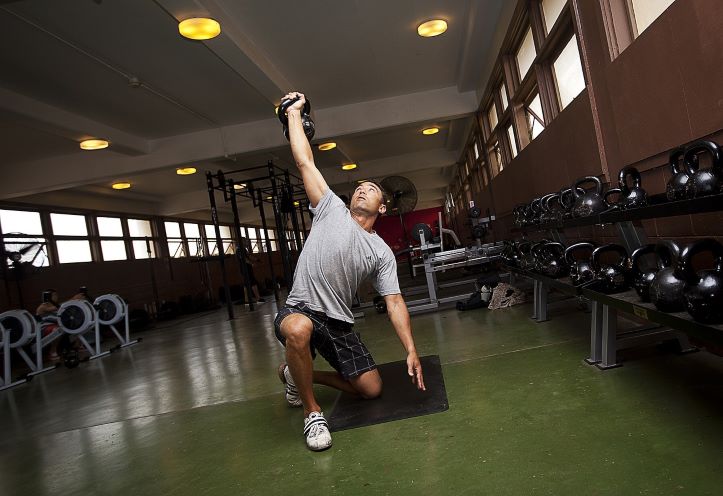It is important to know how to improve cardiovascular endurance. Cardiovascular endurance is essential for overall health and fitness. It involves the ability of the heart, lungs, and blood vessels to supply oxygen-rich blood to working muscles during extended physical activity. Improving cardiovascular endurance offers numerous benefits, such as increased stamina, improved heart health, and enhanced athletic performance.
Enhancing cardiovascular endurance boosts stamina, enabling you to engage in physical activities for longer durations without feeling fatigued. With a stronger heart, you can efficiently pump blood, resulting in lower resting heart rate and blood pressure, reducing the risk of cardiovascular diseases. Additionally, better endurance positively impacts athletic performance, allowing you to sustain intensity during workouts, compete more effectively, and recover faster.
In summary, focusing on cardiovascular endurance is crucial for overall well-being. It leads to increased stamina, improved heart health, and enhanced athletic performance. In the following sections, we will explore practical tips and techniques to help you improve your cardiovascular endurance. So, let’s embark on this journey and discover how to elevate your fitness levels by boosting your cardiovascular endurance!
Incorporating Aerobic Exercises
To improve cardiovascular endurance, incorporating aerobic exercises into your routine is key. These activities get your heart rate up and provide an excellent workout for your cardiovascular system. Let’s explore some important considerations when choosing and implementing aerobic exercises.
Choose Engaging Activities
When it comes to aerobic exercises, the options are plentiful. You can engage in activities such as running, cycling, swimming, dancing, or rowing. The key is to select exercises that you genuinely enjoy. By participating in activities that bring you pleasure, you are more likely to stay motivated and make exercise a regular part of your routine.
Start Slow and Gradually Increase Intensity
When beginning your aerobic exercise journey, it’s important to start at a comfortable pace. Begin with low-impact exercises like brisk walking or light jogging. This allows your body to adapt gradually and build endurance over time. As you progress, gradually increase the intensity of your workouts. This could include increasing your running speed, cycling distance, or trying more challenging dance routines. By progressively pushing yourself, you can avoid overexertion and reduce the risk of injuries.
Interval Training
An effective technique for improving cardiovascular endurance is interval training. This involves alternating between high-intensity bursts of exercise and recovery periods. For example, during a run, you can sprint for 30 seconds, followed by a one-minute recovery jog. Repeat this cycle several times. Interval training challenges your heart and lungs, pushing them to work harder and adapt to different levels of intensity. This method has been shown to enhance cardiovascular endurance more effectively than steady-state exercises alone.

Implementing High-Intensity Interval Training (HIIT)
High-Intensity Interval Training (HIIT) is a popular and effective method for improving cardiovascular fitness. Let’s dive into what HIIT is all about, sample workouts you can try, and the benefits it offers.
What is HIIT?
High-Intensity Interval Training is a workout technique that involves short bursts of intense exercise followed by periods of active recovery. The intense intervals push your heart rate up to near-maximum levels, challenging your cardiovascular system. This type of training has gained recognition for its potential to significantly enhance cardiovascular fitness and endurance.
Highlight the short duration of HIIT workouts and their effectiveness in boosting endurance:
One of the standout features of HIIT workouts is their short duration. HIIT sessions typically last around 20-30 minutes, making them highly efficient for those with busy schedules. Despite the shorter time commitment, HIIT has been shown to produce impressive results in terms of improving endurance and cardiovascular capacity.
Sample HIIT Workouts
Ready to give HIIT a try? Here are a few sample workouts to get you started:
Burpee Blast:
- Perform 20 seconds of burpees at maximum effort.
- Follow it up with 10 seconds of rest.
- Repeat this cycle for 4 minutes.
Jump Squat Power:
- Do jump squats for 30 seconds, giving it your all.
- Take a 15-second recovery break.
- Repeat this cycle for 5 minutes.
Mountain Climber Madness:
- Perform mountain climbers as fast as you can for 40 seconds.
- Take a 20-second rest.
- Repeat this cycle for 6 minutes.
- Remember, these are just examples, and you can customize your HIIT workouts based on your fitness level and preferences. The key is to challenge yourself during the intense intervals and give your body enough time to recover during the rest periods.
A typical HIIT session begins with a warm-up to prepare your body for the upcoming intense exercise. This may include dynamic stretches, light cardio, or mobility exercises. After the warm-up, you’ll move into the main HIIT phase, where you alternate between high-intensity intervals and recovery periods. It’s crucial to listen to your body, push yourself during the intense intervals, and actively recover during the designated rest periods.
Finally, a cool-down period is essential to gradually bring your heart rate down and allow your body to recover. This can involve stretching and gentle movements.
Benefits of HIIT
The benefits of incorporating HIIT into your fitness routine are numerous. Some specific advantages include:
Increased aerobic capacity: HIIT workouts challenge your cardiovascular system, leading to improved oxygen utilization and enhanced aerobic capacity.
Improved metabolism: HIIT sessions have been shown to boost metabolism and facilitate calorie burning even after the workout, promoting weight management.
Time efficiency: With shorter workout durations, HIIT offers a time-efficient option for individuals with busy schedules.
Customizable to fitness levels: HIIT workouts can be tailored to suit different fitness levels and preferences. You can adjust the intensity, duration, and exercises to match your capabilities.
Supporting Cardiovascular Endurance with Nutrition
Nutrition plays a vital role in supporting cardiovascular health and endurance. Let’s explore the importance of a well-balanced diet, the significance of hydration, and the potential role of supplements in enhancing cardiovascular endurance.
Balanced Diet Is The Most Important Thing To Do While Learning How To Improve Cardiovascular Endurance
Maintaining a well-balanced diet is crucial for promoting cardiovascular health and endurance. It’s important to include a variety of nutrient-dense foods in your meals. Focus on consuming lean proteins, such as chicken, fish, and legumes, which provide essential amino acids for muscle repair and growth. Incorporate whole grains like brown rice, quinoa, and whole wheat bread, which are rich in fiber and provide sustained energy.
Don’t forget to include a generous portion of fruits and vegetables in vibrant colors, as they are packed with vitamins, minerals, and antioxidants that support heart health.
Lastly, opt for healthy fats from sources like avocados, nuts, and olive oil, which provide essential fatty acids necessary for optimal cardiovascular function.
Hydration
Proper hydration is vital for maintaining cardiovascular function during exercise. When you’re adequately hydrated, your blood volume increases, which facilitates the delivery of oxygen and nutrients to your muscles.
Aim to drink an adequate amount of water throughout the day to support optimal hydration. While individual water needs may vary, a general recommendation is to consume at least 8 cups (64 ounces) of water daily.
Additionally, incorporate hydrating foods such as watermelon, cucumbers, and oranges into your diet. These foods have high water content and can contribute to your overall hydration levels. Learn more about what is the role of hydration in fitness for more knowledge.
Supplements
Certain supplements may have potential benefits in supporting cardiovascular endurance. Omega-3 fatty acids, commonly found in fish oil supplements, have been shown to support heart health and reduce inflammation.
Coenzyme Q10 (CoQ10) is another supplement that can support cardiovascular function by aiding energy production in the heart muscle.
Beetroot juice, rich in nitrates, has been found to enhance exercise performance and cardiovascular efficiency. However, it’s essential to consult with a healthcare professional before starting any new supplements. They can evaluate your individual needs, consider any underlying health conditions or medications, and provide personalized guidance.

Why is Cardiovascular Endurance Important?
Cardiovascular endurance holds a significant place in maintaining overall health and well-being. Let’s delve into why cardiovascular endurance is so important and the benefits it brings to our lives.
Improved Stamina and Energy Levels
Having good cardiovascular endurance allows you to engage in physical activities with increased stamina. Your body becomes more efficient at delivering oxygen to your muscles, which in turn helps delay the onset of fatigue. With improved endurance, you’ll have the energy to power through daily tasks, participate in sports or fitness activities, and enjoy an active lifestyle.
Enhanced Heart Health
Cardiovascular endurance directly affects the health of your heart. Regular aerobic exercise strengthens the heart muscle, making it more efficient at pumping blood throughout the body. By engaging in activities that challenge your cardiovascular system, you reduce the risk of developing heart diseases. Improved heart health leads to a lower resting heart rate, reduced blood pressure, and a decreased chance of cardiovascular complications.
Weight Management and Metabolism
Cardiovascular exercise, such as running, cycling, or swimming, helps burn calories and promotes weight management. Regular participation in activities that boost cardiovascular endurance increases your metabolic rate, allowing your body to burn calories efficiently. This can contribute to achieving and maintaining a healthy weight, reducing the risk of obesity-related conditions.
Increased Mental Well-being
Physical exercise, including activities that improve cardiovascular endurance, has been linked to improved mental health and well-being. Regular exercise stimulates the release of endorphins, the feel-good hormones, which can elevate mood and reduce symptoms of anxiety and depression. It also enhances cognitive function, promoting mental clarity and focus.
Longevity and Quality of Life
Having good cardiovascular endurance is associated with a longer and healthier life. Research suggests that individuals with higher cardiovascular fitness levels have a lower risk of premature death from cardiovascular diseases and other chronic conditions. By investing in your cardiovascular health, you enhance your overall quality of life and increase your chances of enjoying a fulfilling and active lifestyle as you age.
Conclusion
Improving cardiovascular endurance is crucial for overall health and fitness. Throughout this blog post, we have explored various strategies to enhance cardiovascular endurance and reap its numerous benefits. Let’s recap the key points discussed:
We started by emphasizing the importance of incorporating aerobic exercises into your routine. Choosing engaging activities and gradually increasing intensity help build endurance effectively. Interval training, with its alternating high-intensity bursts and recovery periods, challenges the heart and lungs, further boosting cardiovascular endurance.
We then delved into the implementation of High-Intensity Interval Training (HIIT). Explaining the concept, highlighting the short duration and effectiveness of HIIT workouts, we provided sample workouts to inspire and guide you. Remember to structure your HIIT sessions with warm-up and cool-down periods to ensure a safe and effective workout.
Supporting cardiovascular endurance with proper nutrition is vital. A balanced diet, emphasizing lean proteins, whole grains, fruits, vegetables, and healthy fats, fuels your body optimally. Adequate hydration plays a significant role, so remember to stay hydrated by drinking enough water and consuming hydrating foods.
Lastly, while these strategies are valuable, it’s essential to consult a healthcare professional for personalized guidance. They can assess your individual needs, consider any underlying health conditions, and tailor a plan that suits you best.
Now that you have known how to improve cardiovascular endurance, you must incorporate these tips into your fitness routine and witness the positive impact on your cardiovascular endurance. Remember to listen to your body, gradually progress, and stay consistent. Your journey towards improved cardiovascular endurance starts now. Consult a healthcare professional, and embark on this path to a healthier, fitter you!








